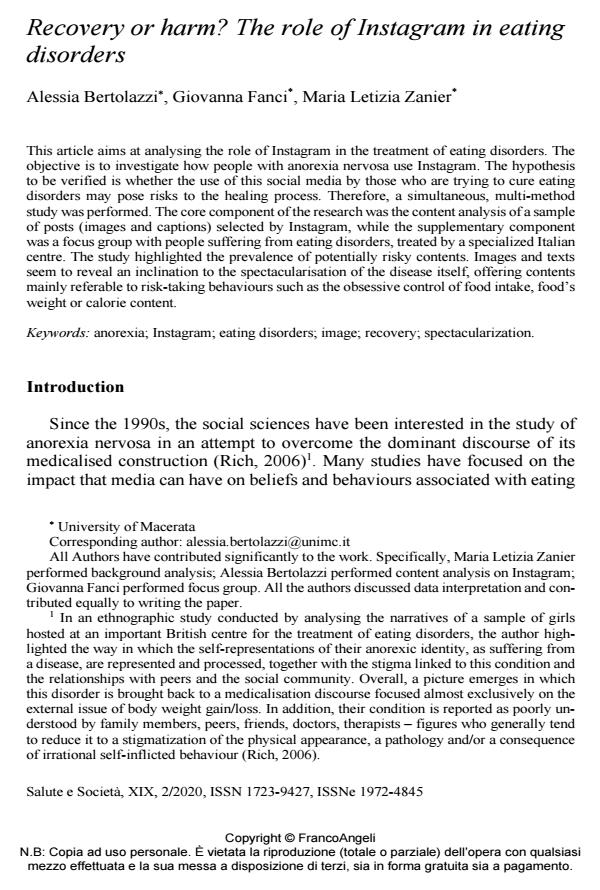Recovery or harm? The role of Instagram in eating disorders
Titolo Rivista SALUTE E SOCIETÀ
Autori/Curatori Alessia Bertolazzi, Giovanna Fanci, Maria Letizia Zanier
Anno di pubblicazione 2020 Fascicolo 2020/2
Lingua Inglese Numero pagine 14 P. 90-103 Dimensione file 171 KB
DOI 10.3280/SES2020-002007
Il DOI è il codice a barre della proprietà intellettuale: per saperne di più
clicca qui
Qui sotto puoi vedere in anteprima la prima pagina di questo articolo.
Se questo articolo ti interessa, lo puoi acquistare (e scaricare in formato pdf) seguendo le facili indicazioni per acquistare il download credit. Acquista Download Credits per scaricare questo Articolo in formato PDF

FrancoAngeli è membro della Publishers International Linking Association, Inc (PILA)associazione indipendente e non profit per facilitare (attraverso i servizi tecnologici implementati da CrossRef.org) l’accesso degli studiosi ai contenuti digitali nelle pubblicazioni professionali e scientifiche
This article aims at analysing the role of Instagram in the treatment of eating disorders. Theobjective is to investigate how people with anorexia nervosa use Instagram. The hypothesisto be verified is whether the use of this social media by those who are trying to cure eatingdisorders may pose risks to the healing process. Therefore, a simultaneous, multi-methodstudy was performed. The core component of the research was the content analysis of a sampleof posts (images and captions) selected by Instagram, while the supplementary componentwas a focus group with people suffering from eating disorders, treated by a specialized Italiancentre. The study highlighted the prevalence of potentially risky contents. Images and textsseem to reveal an inclination to the spectacularisation of the disease itself, offering contentsmainly referable to risk-taking behaviours such as the obsessive control of food intake, food’sweight or calorie content.
Parole chiave:Anorexia; Instagram; eating disorders; image; recovery; spectacularization.
- #Socialfood: Virtuous or vicious? A systematic review Vera Ventura, Alessia Cavaliere, Beatrice Iannò, in Trends in Food Science & Technology /2021 pp.674
DOI: 10.1016/j.tifs.2021.02.018
Alessia Bertolazzi, Giovanna Fanci, Maria Letizia Zanier, Recovery or harm? The role of Instagram in eating disorders in "SALUTE E SOCIETÀ" 2/2020, pp 90-103, DOI: 10.3280/SES2020-002007